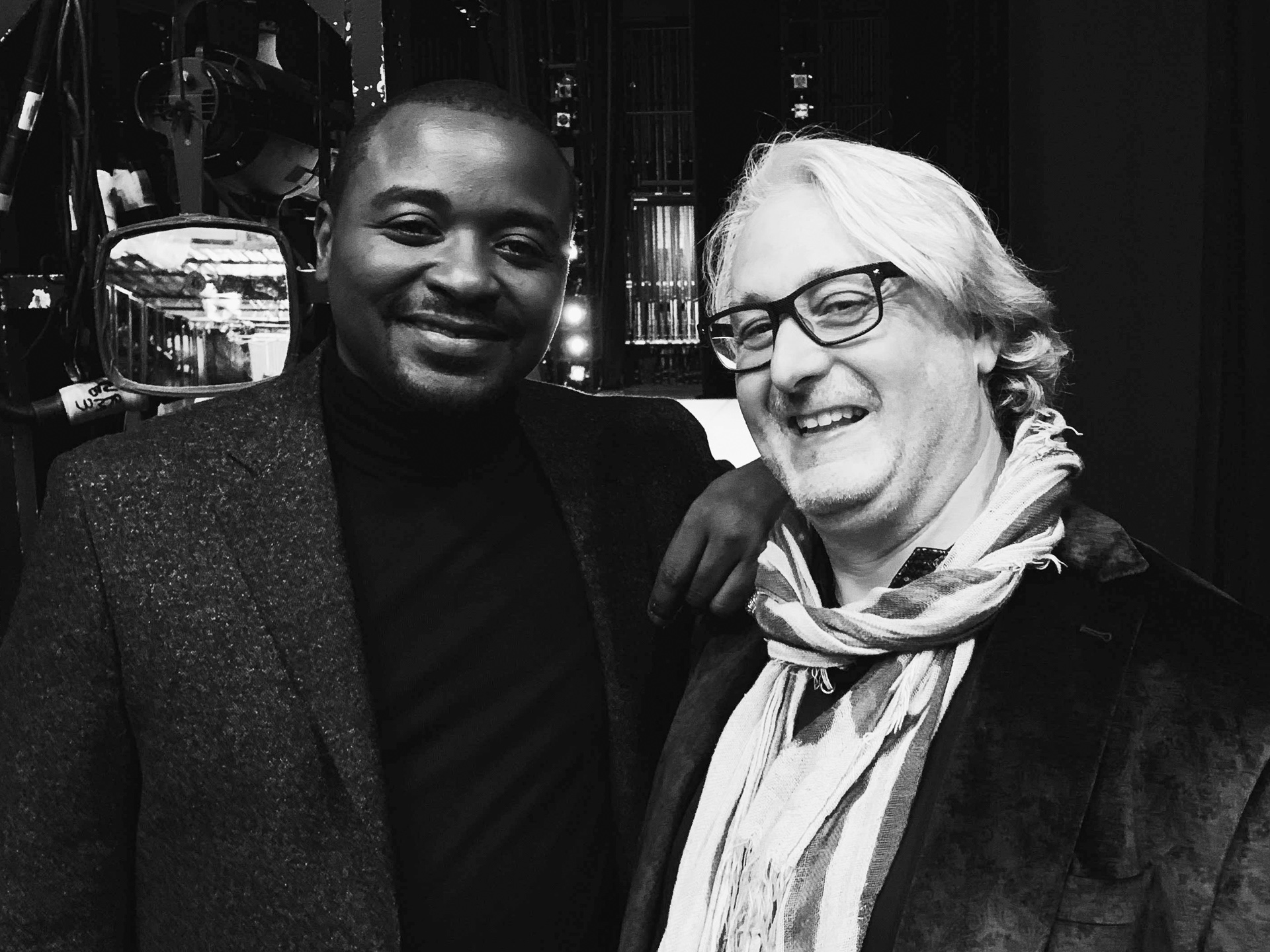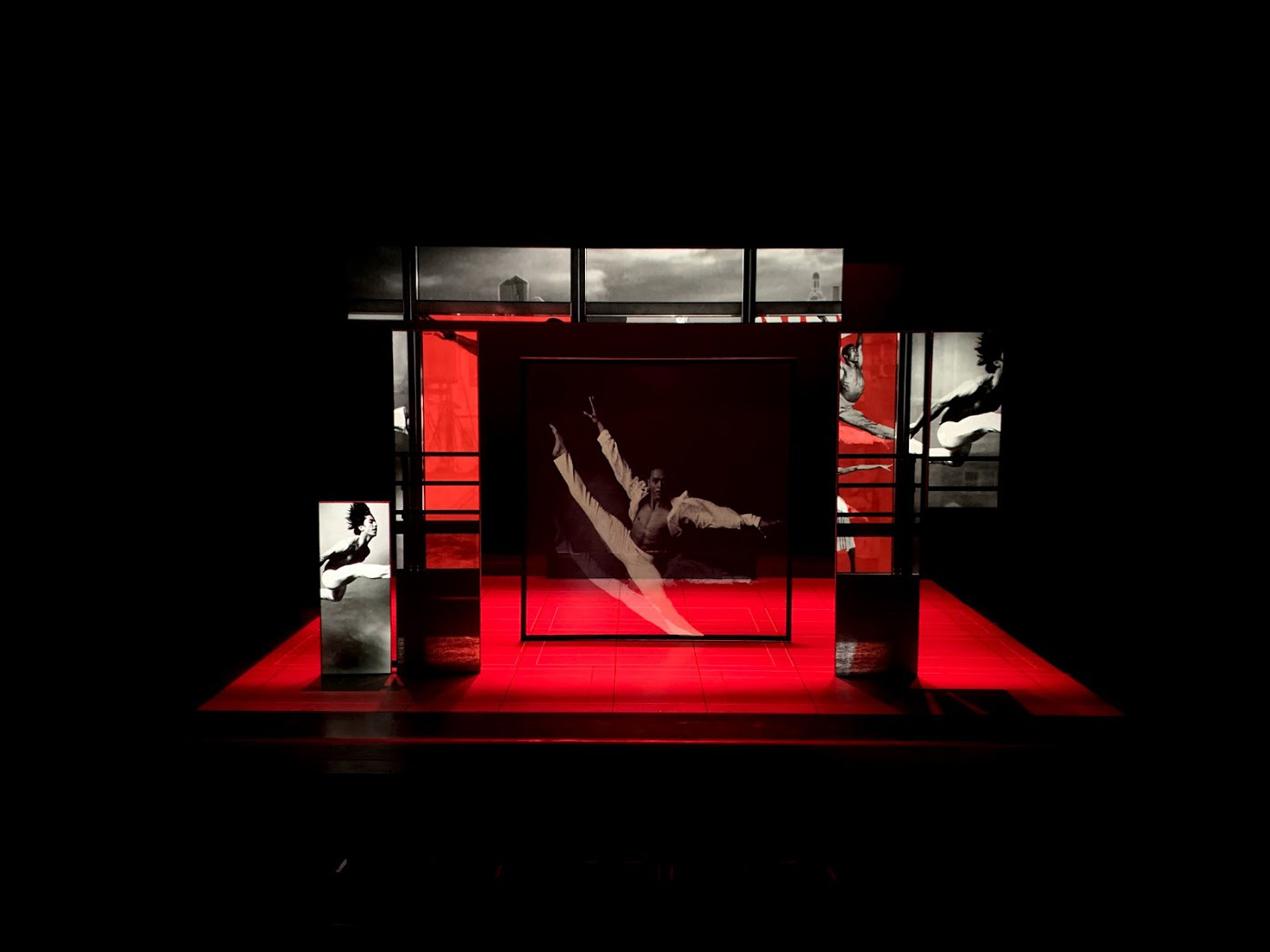In celebration of the 60th Anniversary of Alvin Ailey American Dance Theater (AAADT), artistic director Robert Battle and members of Ailey's creative team collaborated with Bob Bonniol, Caryl Glaab, and Pablo N. Molina of MODE Studios to create a video tribute that includes rarely seen photos, videos, and audio interviews with the late Alvin Ailey. The result is "Becoming Ailey."
The initial question asked creatively was, “How could we hear and see Mr. Ailey in the theater again?” That led to a wide-ranging discussion. “We thought about things that were performative, as well as things that were perhaps in unexpected places like the lobby, or outside,” says Bonniol. “Ultimately, Robert Battle decided that a piece which would open each evenings performance during their run at New York City Center would be the best way forward. They wanted that piece to bring his presence back, but also to showcase the work of Mr. Ailey and the company and focus on what the company has become and how it continues to develop. It was important that it not be a historical documentary piece, but rather something that celebrated the company's achievements and how it continues to grow into the future, furthering Mr. Ailey's vision for the company.”

Photo: Alvin Ailey American Dance Theater's Artistic Director Robert Battle and Bob Bonniol
To achieve the goals for the piece set by AAADT, MODE knew that the form of the presentation would be as important as the content. “We didn't want the piece to feel like you were watching a movie. It needed to be much more theatrical, much more sculptural,” Bonniol notes. “The screens—some rigid and opaque and some transparent—created a type of layered proscenium within the stage, allowing the projections to create depth and a collaged effect. Utilizing archival and contemporary footage as well as still images of the company, we were able to flow images across the various surfaces, moving up and downstage and often changing the perceived shape of the screens. Combined with additional lighting design, the screens and images created an actual three-dimensional sculpted effect.”
Bonniol created an outline structure for the piece broken into four sections: Entrance, Beginnings, Grow, and Joy. He then populated these sections with actual audio quotes by Mr. Ailey pulled from the archive of interviews he had done over the course of his career. “Combined with the collage of images of the company’s work, we were able to bring Mr. Ailey’s presence back into the theater and to illustrate his work and vision on a visceral level,” he says.

When asked if his “Sinatra Live at the London Palladium” project influenced this one, Bonniol responded, “In the sense that once again I was engaged in trying to channel an amazing artist that had passed, yes. Both Frank Sinatra and Alvin Ailey lived lives beyond an easy label. They both pioneered entire forms, and profoundly affected the lives of many people around them. That engenders a certain level of respect and context with which you have to treat the material.”
As with “Sinatra Live,” Bonniol points out that "Becoming Ailey" sought to put a realistic representation of Alvin Ailey on stage in a convincing manner. Both pieces also took the liberty of juxtaposing Sinatra or Ailey into narrative scenic constructs: “I think maybe the most important thing they shared was a nature that was theatrical. 'Becoming Ailey' relied on the whole picture. Without the layers of surfaces at different depths, without the classic theatrical conventions of having scrims and cycs, certainly without Al Crawford’s masterful lighting, this was just television.”
Then there was the score: “We worked with the composer Fred Carl, who teaches at NYU and has an astonishing body of innovative work in musical theater. Fred worked closely with Pablo and used Mr. Ailey’s voice as a constituent element in creating the music and sound design. The idea was to use it not as pure VO, but more as musical instrument, and it was so important in meeting that original question of ‘how do we see and hear Alvin Ailey again in the theater.’”
Archival footage, some of which was more than fifty years old, required restoration, and a digital intermediate process to scan it into new 4k masters. “There was a good deal of rotoscoping, which is cutting Alvin Ailey out of his backgrounds, that both Caryl Glaab and I did for the piece. The currency of this piece was love. We couldn’t afford to hire ILM!” says Bonniol with a laugh. “So it was many, many hours of patiently working frame by frame to make that work. We spent a lot of time finding footage of Mr. Ailey dancing that was iconic choreographically. Then we had to also be using footage where we were fortunate enough to keep him in the frame entirely. We can’t use content where part of his body goes out of frame; it breaks the illusion when you use it for Pepper’s Ghost. And strictly speaking, we didn’t exactly do Pepper’s Ghost. PRG worked closely with us to use their Hologauze surface. It’s a remarkable piece of textile, and comes without the incredible fragility of some other products. We used a 30,000-lumen laser projector in front of house to map all the surfaces with the content environment.”